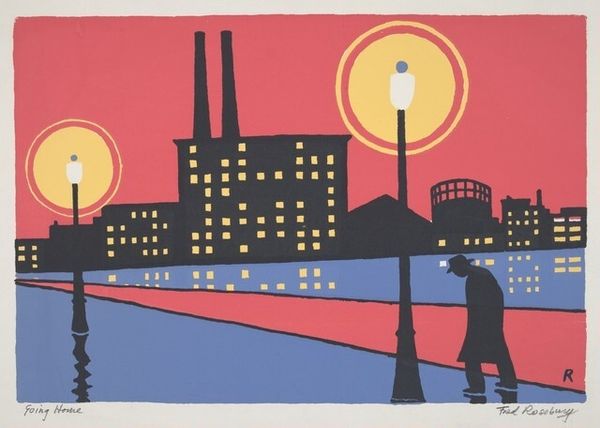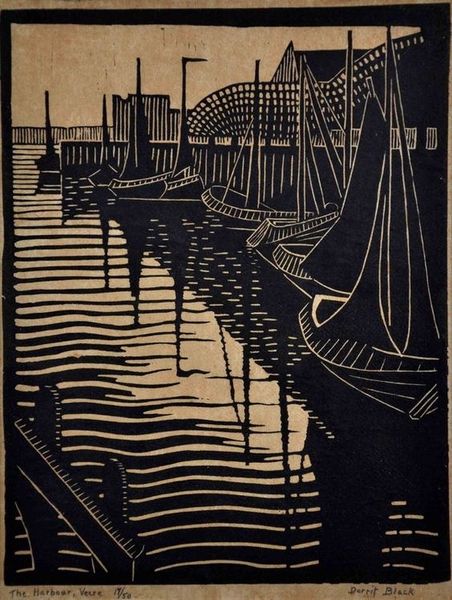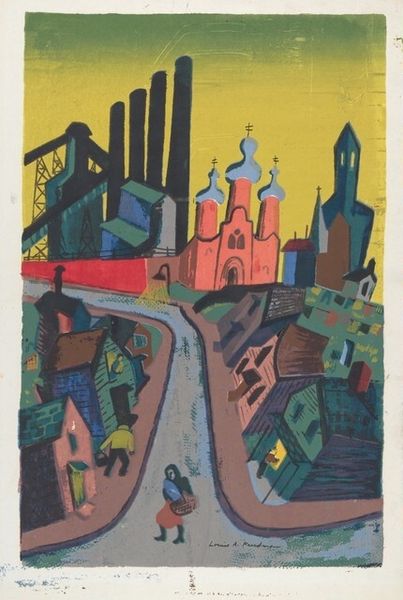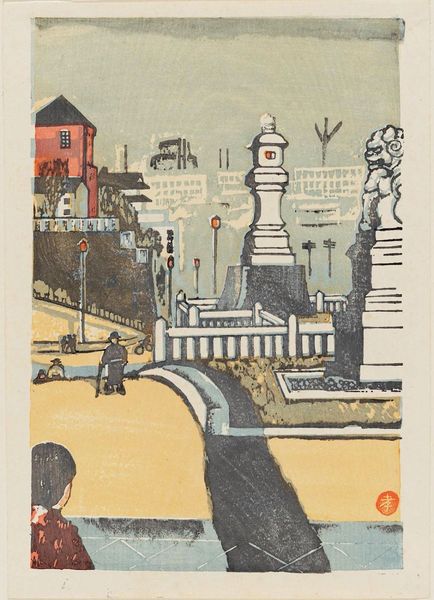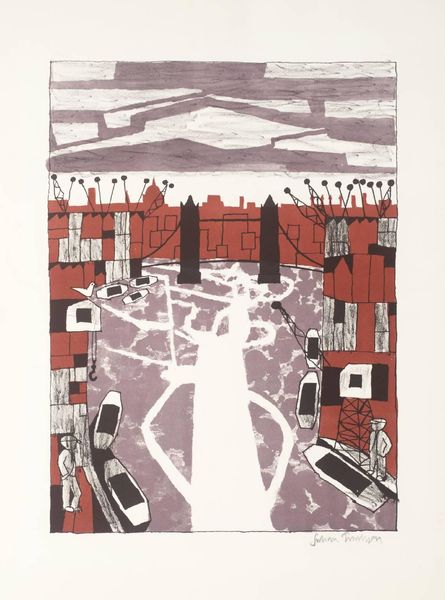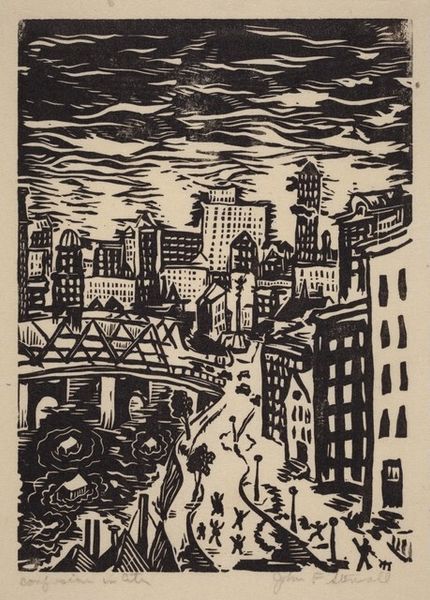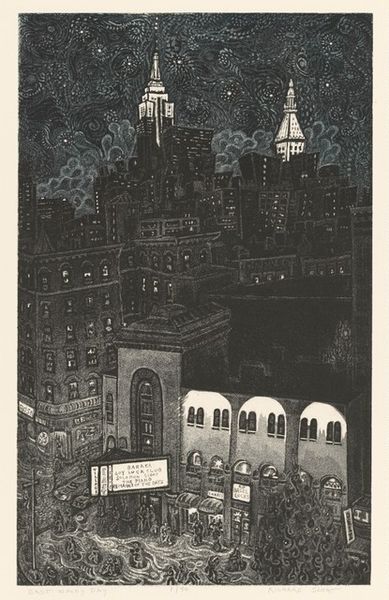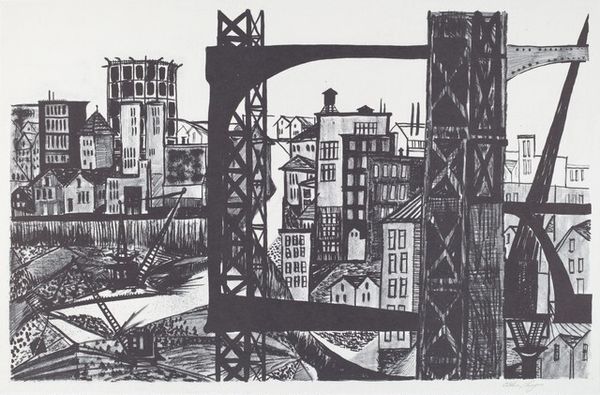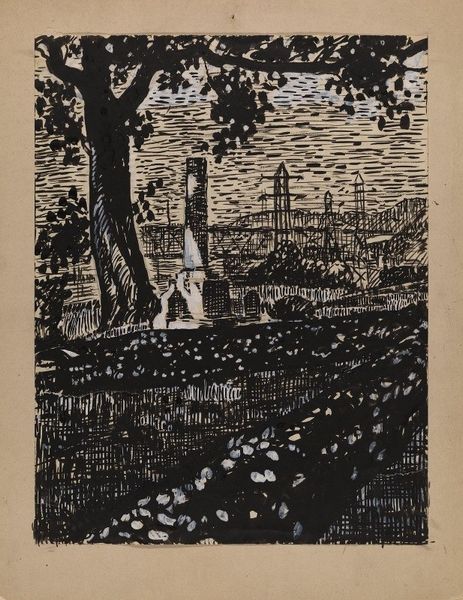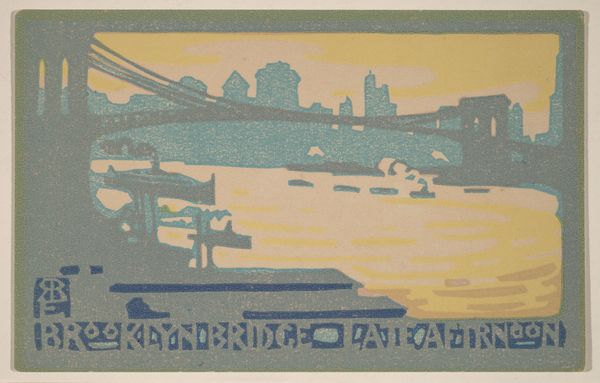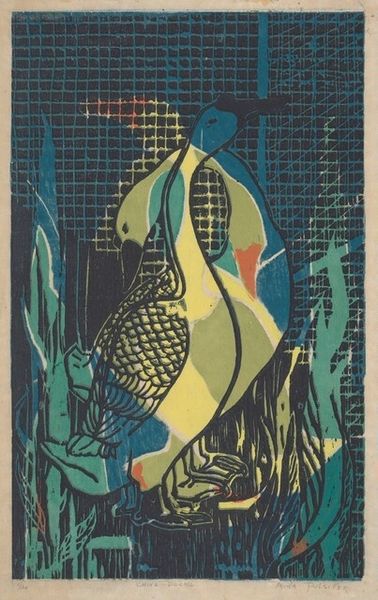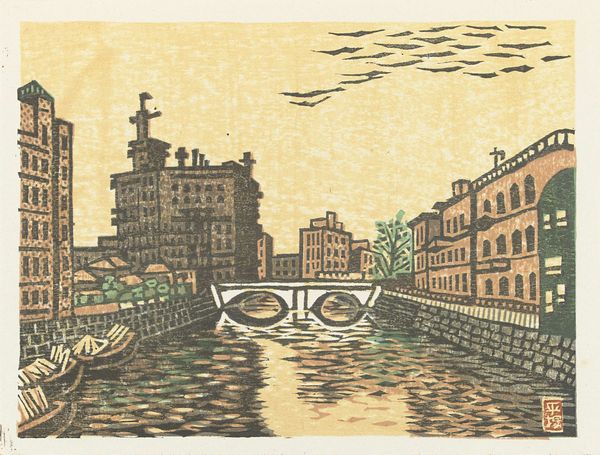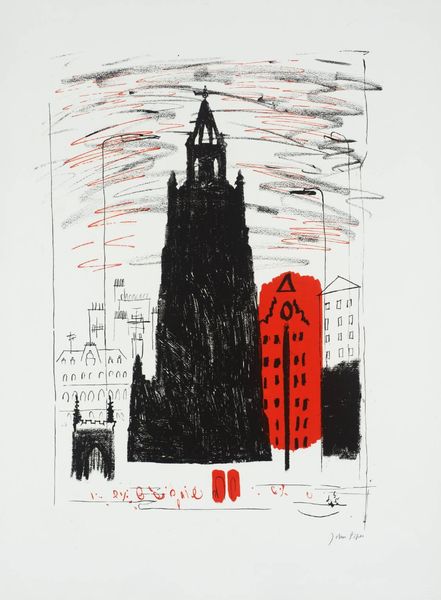
# print
#
caricature
#
landscape
#
caricature
#
pop art
#
pop-art
#
cityscape
Dimensions: Image: 410 x 282 mm Sheet: 505 x 333 mm
Copyright: National Gallery of Art: CC0 1.0
Curator: This evocative print, titled "Homeward," dates back to approximately 1960, and it's the work of Fred Rosebury. It's striking, isn't it? What impressions does it spark in you? Editor: Immediately, I feel a profound sense of solitude and melancholy. The colors—a muted palette, the dark blues contrasting with that fiery red sky—speak to a weary journey. Curator: Rosebury’s use of what some have termed 'pop art landscape' lends itself to a discussion of alienation in the modern urban environment of that era. How do we read this depiction of the lonely figure walking over the bridge alongside the industrial structures in the background? I wonder about its critique of labor and societal progression during that period. Editor: Those industrial structures are interesting because they strike me as totems, perhaps hinting at the decline of the old order or the rise of something new and impersonal. They remind me of smoke stacks or even organ pipes. The composition overall brings to mind various mythic journeys into underworld realms. There is such depth in the interplay between the moon, the structures, and the walker on the bridge. Curator: Exactly. This work can be interpreted through the lens of social and economic change of the period; this subject may be one of the anonymous working classes struggling amidst societal shifts. We see them dwarfed by the structures of production. Is this print not about their labor, their long day, and their journey home? Editor: Perhaps. Or it's about more fundamental human themes—the loneliness of existence, our attempts to find meaning, to navigate this industrial landscape we have built. The light from the lamp seems to guide them; the water reflects this light; maybe there's something eternal being revealed here in their trek homewards? Curator: Perhaps the reading depends on where you find yourself. For some, it may reveal individual and social tensions amid changes; others may feel those fundamental struggles. In both cases, Rosebury provides the artistic language to encourage discussions. Editor: Indeed. He has crafted such potent symbolism here, capturing complex feeling with simple elements and stark forms. What remains are so many different ideas surrounding what homeward actually means.
Comments
No comments
Be the first to comment and join the conversation on the ultimate creative platform.
